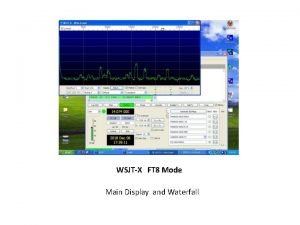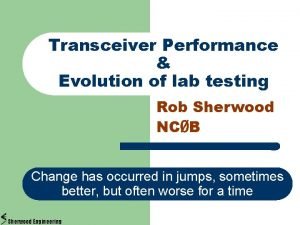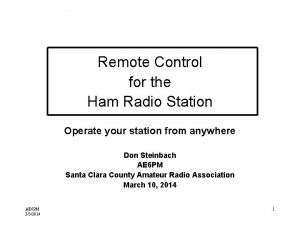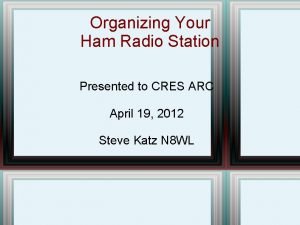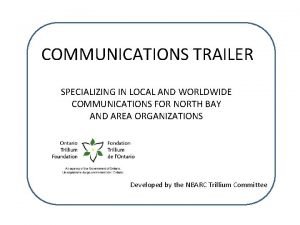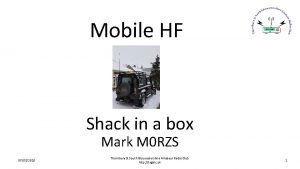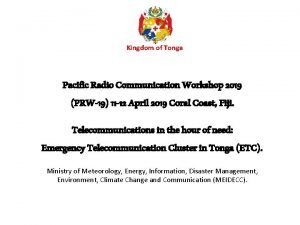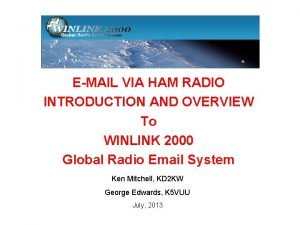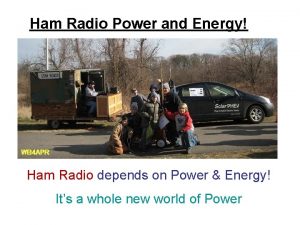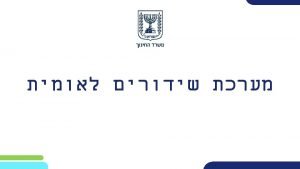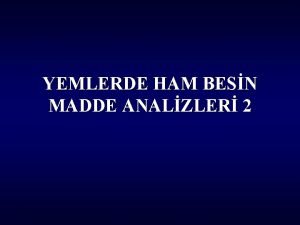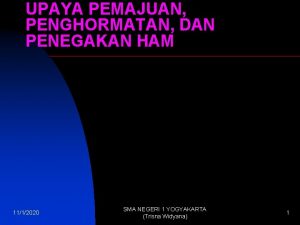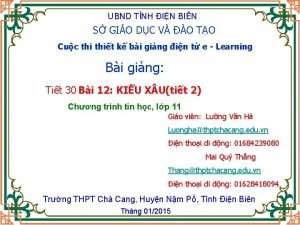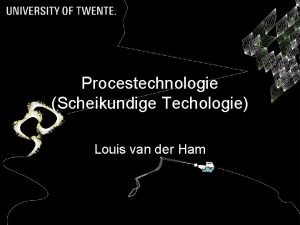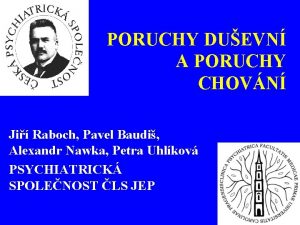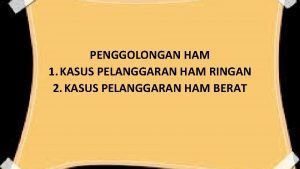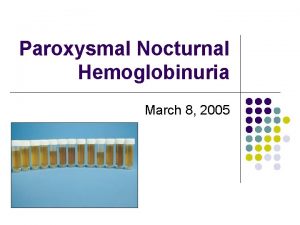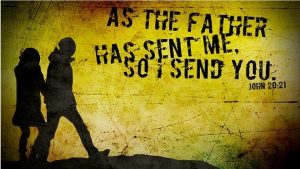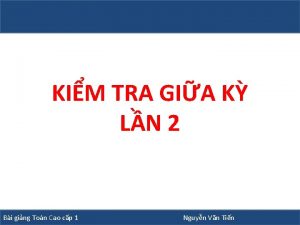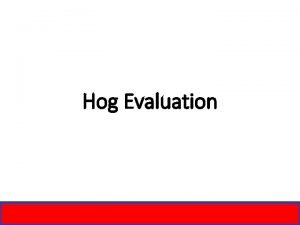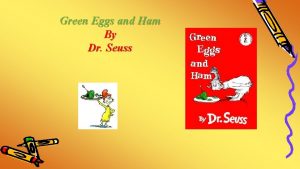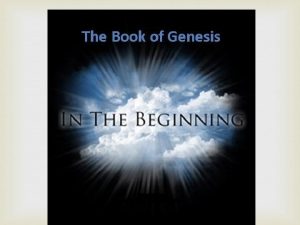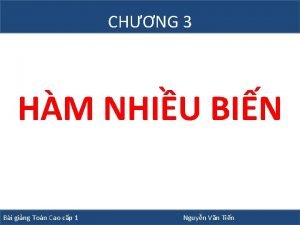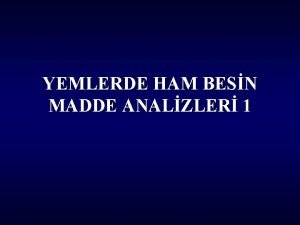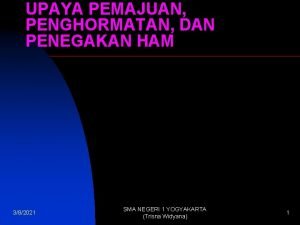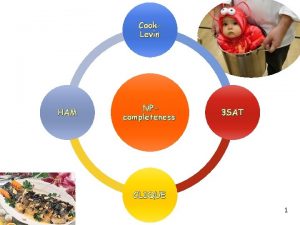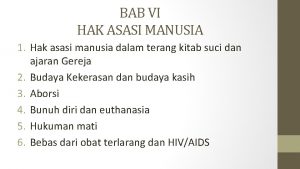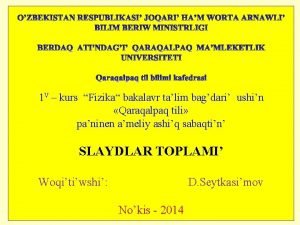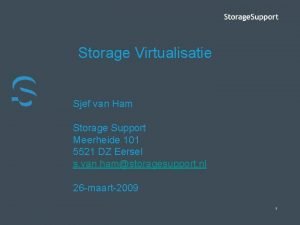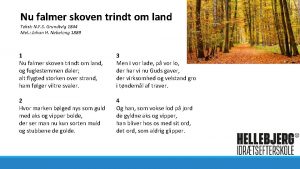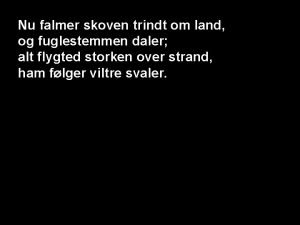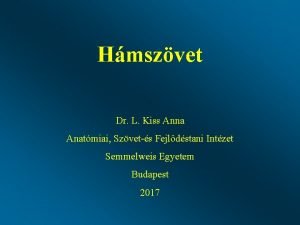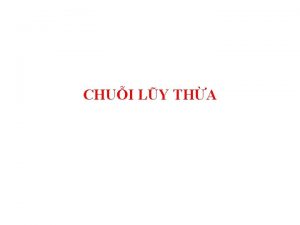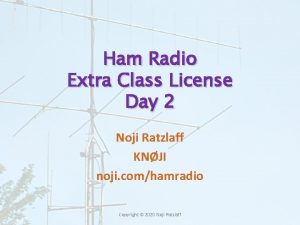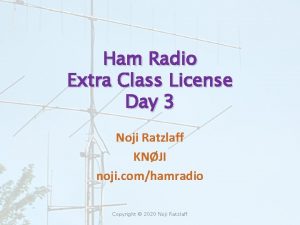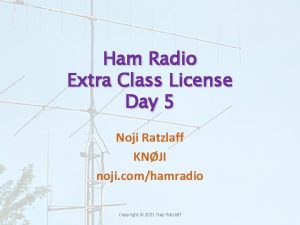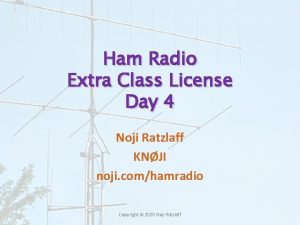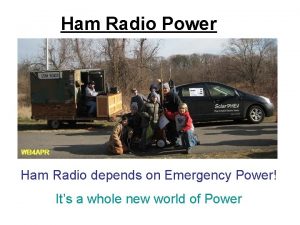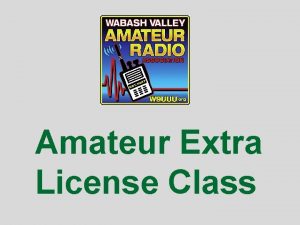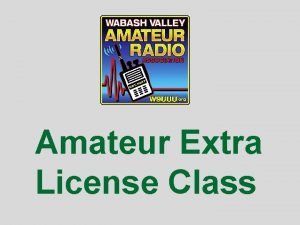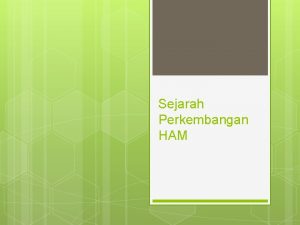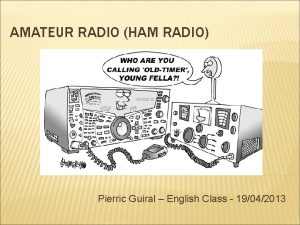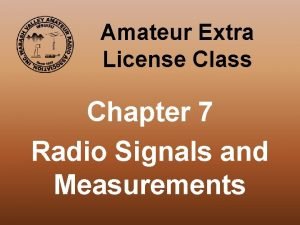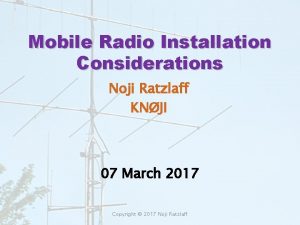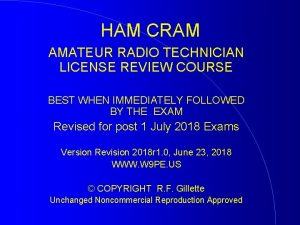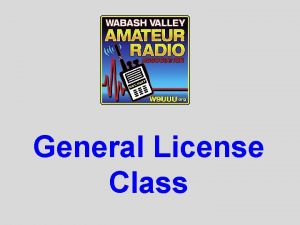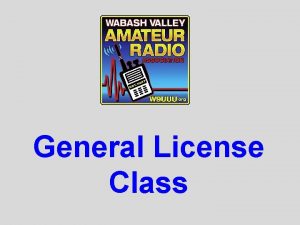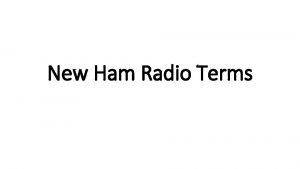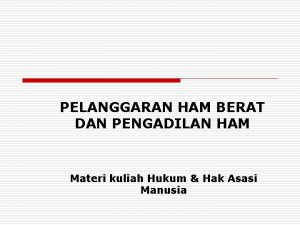Ham Radio Extra Class License Day 1 Noji































































- Slides: 63

Ham Radio Extra Class License Day 1 Noji Ratzlaff KNØJI noji. com/hamradio Copyright © 2020 Noji Ratzlaff

A little about Noji Amateur Extra Registered instructor for ARRL and W 5 YI Accredited VE for both ARRL and W 5 YI Degrees in Electrical Engineering & Math Currently an engineer in American Fork Involved in UCARES, TERT, RACES, CERT Wife, four kids, bunch of grandkids Love family, hamming, scouts, karate, astronomy, camping, hiking, church, DIY 50% Japanese, 30% German, 100% American Copyright © 2020 Noji Ratzlaff

Purposes of this course • Prepare you for the Extra exam • Cover difficult-to-understand concepts • Provide you with yet another sleep aid Copyright © 2020 Noji Ratzlaff

Basic course outline Day 1 : Rules, Standards, Procedures Standards, privileges, problems, satellites Day 2 : Amateur Practices and Electrical Principles Analog, digital, components, characteristics Day 3 : Advanced Components and Practical Circuits Semiconductors, logic circuits, amplifiers, filters Day 4 : Antennas and Transmission Lines Radiation patterns, gain, beamwidth, SWR Day 5 : Signals, Emissions, Propagation Signal and emission types, safety, practices Copyright © 2020 Noji Ratzlaff

What we plan to accomplish today Introduce the course materials Cover • Foundation for discussion • E 1 : FCC rules and standards • E 2 : Operating procedures Copyright © 2020 Noji Ratzlaff

Introduction Reasons, scope of an Extra license This course will cover a large subset Try and stay awake Register with Ham. Study. org Become familiar with noji. com/hamradio Please contact me: knØji@arrl. net and 801 -368 -1865 Copyright © 2020 Noji Ratzlaff

Why get an Extra license? Transmit privileges on all amateur frequencies Get a better or shorter call sign Assist with administering exams as a VE Help out with contesting on otherwise unavailable frequencies (number 2) Prestige Tired of getting baby-sat at Field Day Possibly more credibility for teaching ham radio courses The sheer challenge (because you can, number 1) Copyright © 2020 Noji Ratzlaff

Register with Ham. Study Register for a free account at Ham. Study. org Access your email Recommended Study Method Study Flash Cards : 5 minutes on E 1 Copyright © 2020 Noji Ratzlaff

Ham. Study progress Be sure to study only one sub-element at a time Copyright © 2020 Noji Ratzlaff

Get onto my website noji. com/hamradio § Study and Licensing location of these slides footnotes to these slides links to the exam pool § Glossary § Resources Copyright © 2020 Noji Ratzlaff

Let’s speak the same language phone CW data HF VHF UHF mix product voice signal or communication Morse code digital signal or communication 3 to 30 MHz 30 to 300 MHz 300 to 3000 MHz multiply two signals result of multiplying two signals Copyright © 2020 Noji Ratzlaff

Decibel review # d. B = 10 log 10(ratio) If the ratio = 2: 1, 10 log 10(2) = 3 d. B If the ratio = 4: 1, 10 log 10(4) = 6 d. B If the ratio = 10: 1, 10 log 10(10) = 10 d. B If the ratio = 1: 2, 10 log 10(1/2) = – 3 d. B If the ratio = 1: 4, 10 log 10(1/4) = – 6 d. B 10 log 10(8 / 2) = 10 log 10(8) – 10 log 10(2) = 9 – 3 = 6 = 10 log 10(4) Copyright © 2020 Noji Ratzlaff

Decibel summary 3 d. B = 2 x 6 d. B = 4 x 9 d. B = 8 x 10 d. B = 10 x 20 d. B = 100 x 30 d. B = 1000 x 23 d. B = 200 x 39 d. B = 8000 x – 3 d. B = 1/2 x – 6 d. B = 1/4 x – 9 d. B = 1/8 x – 10 d. B = 1/10 x – 20 d. B = 1/100 x – 30 d. B = 1/1000 x – 23 d. B = 1/200 x – 39 d. B = 1/8000 x Copyright © 2020 Noji Ratzlaff

Sine review Maclaurin series for trigonometric sine: When sine waves mix (multiply): sinx • sinv = ½[cos(x – v) – cos(x + v)] sinx • cosv = ½[sin(x – v) + sin(x + v)] Sine and cosine are the same, but shifted: cosx = sin(x + ½π) = sin(x + 90°) Copyright © 2020 Noji Ratzlaff

Square wave review If 2 L = the period A square wave is actually the infinite sum of a series of (odd-harmonic) sine waves Copyright © 2020 Noji Ratzlaff

E 1 : FCC rules and standards Operating standards Station restrictions Station control Amateur satellite service Volunteer examiner program Copyright © 2020 Noji Ratzlaff

Copyright © 2020 Noji Ratzlaff

Amplitude modulation pictured Modulating signal (audio) superimposed on a carrier signal This results in a modulated signal Copyright © 2020 Noji Ratzlaff

Amplitude modulation calculated (don’t memorize or try this at home) Start with a carrier frequency c(t) = A • sin(2πfct) And your modulating signal (voice) m(t) = M • cos(2πfmt) Force m(t) to be positive by assuming M is between Ø and 1, and by adding 1 (bias) 1 + m(t) (because we can’t have negative sound) Copyright © 2020 Noji Ratzlaff

Amplitude modulation analyzed (for your education only) So far c(t) = A • sin(2πfct) 1 + m(t) = 1 + M • cos(2πfmt) Vary the amplitude with the voice signal by mixing (multiplying) y(t) = [1 + m(t)] • c(t) y(t) = [1 + M • cos(2πfmt)] • A • sin(2πfct) y(t) = Asin(2πfct) + [Asin(2πfct) Mcos(2πfmt)] Using the identity sinx • cosv = ½[sin(x+v) + sin(x-v)], y(t) = Asin(2πfct) + ½AMsin(2π(fc+fm)t) + ½AM sin(2π(fc-fm)t) The result (product) is the carrier, plus two sidebands Now you know what makes up AM and its sidebands Copyright © 2020 Noji Ratzlaff

Carrier and two sidebands AM bandwidth occupied by all three Copyright © 2020 Noji Ratzlaff

Single sideband Remove the carrier and one sideband 3 k. Hz maximum for each sideband Copyright © 2020 Noji Ratzlaff

SSB phone agreement LSB : 160, 75/80, 40 meters USB : 60, 20, 17, 15, 12, 10 meters Why? Current amateur practice Copyright © 2020 Noji Ratzlaff

Band edge quiz 1 You hear the voice of a station calling CQ on 7. 127 MHz. Is it legal to key up your mic and answer it? Nope: LSB will extend 3 k. Hz down, 1 k. Hz below the band edge Can this station be calling legally? Copyright © 2020 Noji Ratzlaff

CW spectrum Very narrow bandwidth (150 Hz) but extends to both sides of the carrier Copyright © 2020 Noji Ratzlaff

Band edge quiz 2 CW station calling CQ on 7. 000000 MHz. Is it legal to answer it? Nope: CW bandwidth will extend 75 Hz below the band edge Copyright © 2020 Noji Ratzlaff

60 -meter band is unique Limited to 100 W PEP Channelized frequencies Data has 2. 8 k. Hz bandwidth CW must be set to the center frequency Also (not on the exam) it uses USB Copyright © 2020 Noji Ratzlaff

Some antenna restrictions Location important to American history, architecture, or culture Environmental Assessment is required before placing one in an officially designated wilderness or wildlife area Must obtain FAA approval per Part 17 rules before placing one near an airport Copyright © 2020 Noji Ratzlaff

Spurious emissions Definition Signal outside its bandwidth that can be reduced without losing its intended information If interfere with broadcast Limit your hours of operation Maximum emission Spurious emissions allowed to -43 d. B Permit for emission Can obtain a permit (STA) to experiment with spurious emissions and interference Copyright © 2020 Noji Ratzlaff

Maritime and air ham radio All amateur operations must be approved by the skipper or pilot in charge US air and sea vessels require FCC ham licenses to operate amateur equipment The FCC ham licensee must be in control of ham equipment on US air and sea vessels Copyright © 2020 Noji Ratzlaff

Spread-spectrum transmissions Transmitted frequency changes rapidly Interference-resistant algorithm Only on frequencies above 222 MHz No harmful interference Use only in an FCC-controlled area (USA) No obscuring of messages Maximum power is 10 W Used for 2. 4 GHz mesh networks Copyright © 2020 Noji Ratzlaff

Station control Local control Direct manipulation by the control operator Remote control Controlled indirectly through a link Control operator must be present at the control point Must implement a 3 -minute timeout if link fails Automatic control Control operator does not need to be at the control point Only repeaters, auxiliary, and space stations apply HF repeaters limited to 29. 500 ― 29. 700 MHz Copyright © 2020 Noji Ratzlaff

Outside regular communication Business Must not transmit for pecuniary reasons No transmissions for hire Telemetry One-way transmission of measurements Copyright © 2020 Noji Ratzlaff

Borders Line A Parallel to and south of Canadian border No transmitting 420 to 430 MHz north of it CEPT Allows US amateurs to operate in Europe National Radio Quiet Zone Area surrounding the National Radio Astronomy Observatory (between Virginia & West Virginia) Copyright © 2020 Noji Ratzlaff

Other rules RACES Any licensee can be certified Can use any amateur frequency Auxiliary station Technician and higher can control RF amplifiers Can resell for below 2 m if used Must satisfy spurious emission standards at full power Copyright © 2020 Noji Ratzlaff

Earth and space stations Earth station 50 km of the earth’s surface Any amateur can operate one Space station Must be able to terminate telecommands HF = 40, 20, 17, 15, 12, and 10 meters VHF = 2 meters Any amateur can operate one Copyright © 2020 Noji Ratzlaff

Satellite communication Satellite service Amateur radio stations on satellites Telecommand station Controls a space station Any appropriate station designated by the space station licensee Store-and-forward Stores digital messages for later download Relays messages around the world Copyright © 2020 Noji Ratzlaff

Satellite frequencies Mode designator Uplink and downlink frequency bands Mode U/V Receiving in UHF from 435 to 438 MHz L and S bands are 23 cm and 13 cm bands Copyright © 2020 Noji Ratzlaff

Satellite linear transponder Linear because frequency offsets are constant All signal types can be relayed Limit your ERP to avoid reducing the downlink power to other users Copyright © 2020 Noji Ratzlaff

Satellite orbit Ascending Passing from south to north Descending Passing from north to south Orbital period Time it takes for one revolution Copyright © 2020 Noji Ratzlaff

More about satellites Rapidly repeating fading effect Satellite is spinning Antenna to minimize spinning effects Circularly polarized Geostationary satellite Appears to stay in one position How to locate a satellite Calculate using its Keplerian elements Copyright © 2020 Noji Ratzlaff

Ham radio examinations Minimum passing score is 74% (37 out of 50) Three volunteer examiners (VEs) must administer Element 4 (Extra) exams Three VEs must certify each passing score If an examinee fails, the application is returned to the examinee by the VE The VEC can choose to administer the exam by real-time internet video Copyright © 2020 Noji Ratzlaff

Volunteer examiners Supervises proper conduct during an exam Submits the application to the VEC following a successful examination Not allowed to administer exams to VE relatives Terminates the exam if instructions are not being followed Penalty for fraud by the VE is revocation of the VE’s license Copyright © 2020 Noji Ratzlaff

Volunteer examiner coordinator It’s an organization, not a person The VEC confirms the accreditation of each VE Helps maintain the pool of license examination questions Copyright © 2020 Noji Ratzlaff

E 2 : Operating procedures Television standards Contesting and DX operating VHF and UHF digital modes Copyright © 2020 Noji Ratzlaff

Vestigial sideband VSB is AM, but using one complete sideband a portion of the other Reduces bandwidth from straight AM Allows for simple circuitry Video resolution needs this Copyright © 2020 Noji Ratzlaff

Fast-scan television (NTSC) (transmission) NTSC is the North American standard for fastscan ATV Separate VHF or UHF audio link, FM sub-carrer, and FM of video are common You’re likely to find FM ATV transmissions on 1255 MHz Blanking is the disabling of the scan beam as it travels across the screen Copyright © 2020 Noji Ratzlaff

Fast-scan television (features) New frames transmitted 30 times per second Each frame is made of 525 horizontal lines Interlaced pattern generated by scanning alternating even and odd line numbers Color information carried in the Chroma signal Copyright © 2020 Noji Ratzlaff

Slow-scan television (transmission) Approximate bandwidth is 3 k. Hz Analog images transmitted using SSB on HF by tones representing the video Restricted to bandwidths no greater than voice on phone segments Copyright © 2020 Noji Ratzlaff

Slow-scan television (features) Only an SSB receiver and a computer needed to decode SSTV The VIS code in SSTV identifies the SSTV mode being used 128 or 256 lines per frame Tone frequency encodes the picture brightness Specific tone frequencies signal a new line Copyright © 2020 Noji Ratzlaff

Contesting Can join in, even if you don’t submit a log Cabrillo is the standard log format self-spotting on a spotting network is prohibited No contesting on the 30 -meter band Largest activity in a VHF/UHF contest near the weak signal segment Copyright © 2020 Noji Ratzlaff

Working DX If the DX station is working a pileup, just send your call sign once or twice After sunset, switch to a lower frequency if the DX stations get too weak to copy The DX station might be listening on another frequency due to calling frequency prohibition, to separate the calling from DX stations, or reduce interference A QSL manager handles QSL card traffic Copyright © 2020 Noji Ratzlaff

Digital transmission A baud is the number of data symbols transmitted per second 300 baud is the most common HF packet data rate 300 -baud packet has the fastest data throughput Copyright © 2020 Noji Ratzlaff

Digital transmission error detection ARQ Automatic repeat request Automatically requests a re-transmission if it detects errors FEC Forward error correction Transmits extra data to detect and correct transmission errors Copyright © 2020 Noji Ratzlaff

JT 65 Digital mode that is especially useful for EME communication Can decode signals many d. B below the noise floor using FEC Can decode signals with a very low signal-tonoise ratio Copyright © 2020 Noji Ratzlaff

FSK The most common HF data modulation The bandwidth of MFSK 16 is 316 Hz Direct FSK applies the data signal to your VFO FSK 441 is especially designed for meteor scatter signals Copyright © 2020 Noji Ratzlaff

FSK and RTTY software Displays contact information and integrity An ellipse disappears when selective fading has occurred Copyright © 2020 Noji Ratzlaff

APRS (Automatic Packet Reporting System) Uses latitude and longitude to communicate your location An APRS station with a GPS can show a mobile station’s location during an event AX. 25 is the digital protocol for APRS Unnumbered Information is used by APRS to transmit beacon data Copyright © 2020 Noji Ratzlaff

More about digital transmission PACTOR can be used to transfer binary files on HF PSK 31 uses variable-length coding on HF for bandwidth efficiency PSK 31 has the narrowest bandwidth Copyright © 2020 Noji Ratzlaff

End of Day 1 Your homework: Master E 1 and E 2 on Ham. Study See you next week Copyright © 2020 Noji Ratzlaff

Skipped slides The slides that follow were removed from the main presentation in the interest of time, but are included here for future consideration or to complete your study of the applicable subelements Copyright © 2020 Noji Ratzlaff

More about spectrum analyzers Able to determine Degree of isolation between 2 -meter duplexer input and output Whether a crystal is operating on its fundamental or overtone frequency Transmitter spectral output Caution Be sure to attenuate the transmitter output going into the analyzer Copyright © 2020 Noji Ratzlaff

Dip meter Measures circuit resonance The tighter it’s coupled to the circuit being checked, the less accurate the reading Copyright © 2020 Noji Ratzlaff
 Eric noji md
Eric noji md Day 1 day 2 day 3 day 4
Day 1 day 2 day 3 day 4 Ft8 waterfall
Ft8 waterfall Sherwood ham radio
Sherwood ham radio Ham radio remote
Ham radio remote Ham remote control
Ham remote control Ham radio station layout
Ham radio station layout Emergency communication trailer
Emergency communication trailer Iss ham radio antenna
Iss ham radio antenna Best shack in a box ham radio
Best shack in a box ham radio Ham radio tonga
Ham radio tonga Hf radio email
Hf radio email Ham radio math formulas
Ham radio math formulas Solar powered ham radio
Solar powered ham radio Day 1 day 2 day 817
Day 1 day 2 day 817 Count that day lost by george eliot
Count that day lost by george eliot Awin support
Awin support Driver license class
Driver license class Class c license
Class c license Mbitr radio class
Mbitr radio class Schoolmax login
Schoolmax login Ocean the part day after day
Ocean the part day after day Day to day maintenance
Day to day maintenance As your room gets messier day by day, entropy is
As your room gets messier day by day, entropy is I don't know tomorrow
I don't know tomorrow What happened sunday night in romeo and juliet
What happened sunday night in romeo and juliet Growing day by day
Growing day by day Observation of seed germination day by day
Observation of seed germination day by day Germination conclusion
Germination conclusion Geotropism
Geotropism I live for jesus day after day
I live for jesus day after day Casting crowns glorious day (living he loved me)
Casting crowns glorious day (living he loved me) Day one day one noodle ss2
Day one day one noodle ss2 Tactique futsal
Tactique futsal Ham selüloz nedir
Ham selüloz nedir Penghormatan dan penegakan ham
Penghormatan dan penegakan ham Hàm upcase có chức năng gì
Hàm upcase có chức năng gì Louis van der ham
Louis van der ham Ham d17
Ham d17 Contoh pelanggaran ham ringan adalah... *
Contoh pelanggaran ham ringan adalah... * Ham ipek iplik
Ham ipek iplik Pnh egg
Pnh egg Ham test pnh
Ham test pnh Mordecai ham
Mordecai ham It is a market form of meat preserved by salting
It is a market form of meat preserved by salting Hàm cobb-douglas toán cao cấp
Hàm cobb-douglas toán cao cấp Ham loin junction
Ham loin junction Ham sphere
Ham sphere Green eggs and ham rhyming words
Green eggs and ham rhyming words Geneology of ham
Geneology of ham Tập đóng
Tập đóng Ham kül
Ham kül Upaya pemajuan penghormatan dan penegakan ham
Upaya pemajuan penghormatan dan penegakan ham Sejarah perjuangan ham di indonesia
Sejarah perjuangan ham di indonesia Levin ham
Levin ham Contoh kekerasan tersamar
Contoh kekerasan tersamar Fizika oliy ta lim
Fizika oliy ta lim Storage virtualisatie
Storage virtualisatie Habeas corpus act berisi
Habeas corpus act berisi 3 countable nouns
3 countable nouns Tekst nu falmer skoven
Tekst nu falmer skoven Aks og vipper bolde
Aks og vipper bolde Többrétegű elszarusodó hám
Többrétegű elszarusodó hám Tính bán kính hội tụ của chuỗi
Tính bán kính hội tụ của chuỗi


